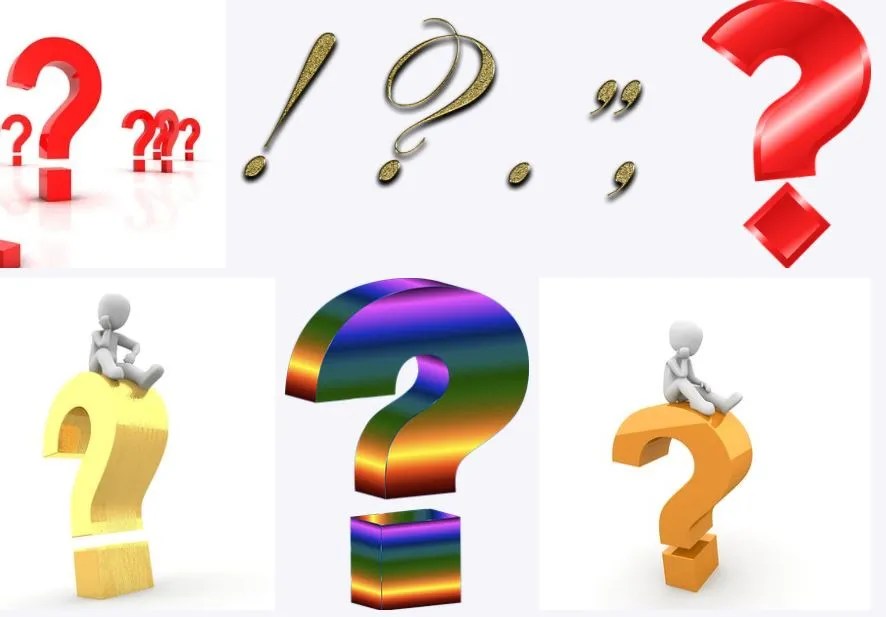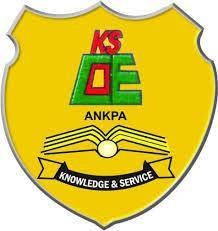
Writers employ the precise use of punctuation marks to convey meaning clearly and concisely. Examples of the most commonly used punctuation marks in writing are provided in this article.
Using words to express one’s thoughts and feelings is an essential ability. People may be able to write well, yet they may be plagued by a phobia of grammar and punctuation. While they are adept at prewriting, organizing, and revising, they struggle with the finer points of language and punctuation. Conventions of conventional written English are not to be feared. These conventions can aid writers in their efforts to communicate more effectively.
There is a widespread belief that punctuation rules are hard laws and that only a select few are knowledgeable about them all. The rules of punctuation were developed not by professionals but by educated speakers and authors, therefore students may be startled to learn this fact. As a result, good authors have utilized punctuation in a variety of ways that have helped their readers understand what they are saying. Because of their effectiveness, writers have agreed to adhere to these guidelines. The rules of punctuation are not set in stone; they’ve evolved and will do so in the future, too. Writers have devised and maintained the standards of punctuation to make their text more effective. This article focuses on the most often used punctuation marks.
Add emphasis and cadence to your written words with punctuation. The usage of punctuation marks is still a challenge for many people, from native English speakers to those learning English as a second language.
You’re not alone if you have trouble with punctuation. People, even natural English speakers, have difficulty putting the correct punctuation marks where they’re supposed to. The good news is that when you break down all 14 different punctuation marks, they’re not as confusing as you might expect. Whether you’re writing an essay or a best-selling novel, knowing how to correctly employ punctuation is an essential skill to have.
Importance of Punctuation Marks
The importance of punctuation marks cannot be overstated. In writing, it has a significant role to play in helping the reader understand what is being written; it helps to avoid confusion and overlap between the sentence and words, and if used correctly, it can aid comprehension. Failure to use, abuse, or place these marks in their proper locations will make it difficult for the reader to grasp what has been written. A crucial function in conveying the intended meaning of language is played by punctuation marks. It is possible to change the meaning of a statement altogether and even make it utterly meaningless if the punctuation marks are used incorrectly.
Usage of Punctuation Marks
One can use any one of 14 punctuation marks to express grammatical ideas in English. These punctuation signs are period, question mark, exclamation point, comma (or colon), semicolon (or colon), dash (or hyphen), apostrophe (or quote mark), braces (or brackets), an ellipsis (or quotation mark). Your writing will be easily readable and much more enticing if you use them correctly.
Types and Examples of Punctuation Marks
We can categorize punctuation into the following five types:
- Sentence endings: Period, Question mark, Exclamation point
- Colon, Semicolon, and comma
- Hyphen and Dash
- Parentheses, Braces and brackets
- Ellipsis, Quotation marks and Apostrophes
In a sentence or a piece of writing, each category has its unique function. Even though there are some subtle differences between British and American punctuation, we’ll concentrate on the most common usage. Here are some examples of how each punctuation mark might be used.
1. Period (.)
This is most likely the simplest. The period, often known as a full stop, signifies the end of a phrase. A complete and declarative sentence is regarded to be a full sentence.
At the end of this sentence, we have a period.
Example:
That dog slipped through the open gate.
Abbreviations, such as a name or a title, can also include periods.
The following are some examples of abbreviations in which the period has been properly inserted:
Dr. Smith examined the medical records of his patient.
The front door of Mr. H. Potter was closed.
2. Sentence Endings
When it comes to sentence endings, three of the fourteen punctuation marks are appropriate. The period, the question mark, and the exclamation point are all acceptable punctuation symbols to end a sentence.
Periods are used at the end of statements that are considered to be complete and after several abbreviations in declarative sentences.
Example: Jane and Jack headed to the market together.
Make use of the question mark (?) when you want to ask a direct question.
Example: Where did Raphael go?
To convey a spontaneous outburst or add emphasis, use the exclamation point (!).
Example: Raphael yelled, “Holy cow!” amid the conversation.
My mother-in-rants law’s irritated me to the point of rage!
3. Semicolon, Comma, and Colon
The colon, comma, and semicolon are frequently misunderstood because they can all be used to signify a halt in a series of events.
The comma is a punctuation mark that separates two or more ideas or concepts in a sentence. After the salutation and closure, it is also employed in figures, dates, and letter writing.
Example: I’d like to speak directly to you: Please accept my gratitude, John, for all your assistance.
When two entire sentences need to be separated: After seeing a movie, my friends and I went out to eat.
A comma is used to demarcate lists or items inside a sentence.
There is some disagreement over whether or not a comma should be used before the conjunction at the end of a list. Although it is important in a more complex series of parts or sentences like the one above, this comma is known as an Oxford or serial comma, is sometimes regarded as unneeded in simpler sequences. It usually boils down to the writer’s personal preference in terms of writing style.
The semicolon (;) is a punctuation mark used to separate independent clauses. A semicolon instead of a period connects the clauses more closely than a period would.
Example: He knew she said it to make him angry; that’s why John was irritated.
You may utilize a colon in three different ways. For starters, use it after a term that introduces a quotation or sequence of quotations, explanations, examples, etc.
Example:
He intended to major in four disciplines: politics, philosophy, sociology, and economics.
Lastly, a colon can be used to emphasize a point:
Example:
She adored one thing beyond all others: her cat.
Non-grammatical uses of the colon include ratio, time, business correspondence, ratio, business correspondence, references.
4. The Hyphen and the Dash –
The dash and hyphen are two other punctuation signs that are frequently used. Due to their appearance, these marks are commonly mistaken for one another, yet they are completely distinct.
Statements are broken up by a dash. The en dash and the em dash are the most commonly used forms of dashes.
The en dash is a symbol (–) that is twice as long as a hyphen and is used to denote a range, linkages, or differentiation, such as 10001-01 or Ikeja-Lagos.
Comma, parenthesis, or colon can all be replaced with one long em dash to make a statement easier to read or to highlight a point at the end of a sentence.
For instance, she provided him with her response — No!
It’s up to you whether or not to place spaces around the em dash. Consistency is key.
When two or more words are combined into a single compound term, a hyphen is used instead of spaces to separate them. As an example, part-time, back-to-back, or a well-known company.
5. Parentheses, Braces, and Brackets
Symbols such as braces, brackets, and parenthesis are used to bring together words that need further explanation or words that are termed grouped.
It is common practice to employ brackets ([]), squared-off notations for elaboration or clarification. The sentence will still make sense even if the information in the brackets is removed.
He [Hugh Jackman] was the last individual to be seen at the residence.
Two or more lines of text or a list of items are enclosed in braces () to indicate that they are regarded as a single unit. To show what should be in the same lines in computer programming, they are not used in most writing. Mathematical expressions can also benefit from their use. For instance, 8{6+[43-9]}=y.
Curved notations, such as parentheses (()), can be used to express additional ideas or qualifiers. In most circumstances, though, commas can be used in place of parenthesis without altering the intended meaning.
Example: Jack and Anna (who are step-siblings) both have blue eyes.
6. Ellipses, Apostrophes, and Quotation marks
The ellipse, apostrophes, and quotation marks round up the English grammar’s final three punctuation types. Unlike the previous punctuation marks, they are not connected in any way.
a) Apostrophe (‘)
These are used to express omissions from words, possessive cases, and lowercase letter plurals. The apostrophe can be used in a variety of ways, such as:
- I’ve seen that movie several times.
- I’ve watched it so many times that I’ve memorized the words.
- The guest was wounded by Rachel’s dog.
- Six persons were instructed to keep their p’s and q’s in check.
Teachers and editors may prefer using apostrophes on symbols, numbers, and capitalized letters even if they are not required, this common practice.
b) Quotation marks (“”)
These are two separate punctuation marks that are used to indicate the beginning and conclusion of passages that are being quoted verbatim by an author from whom the text is taken. Also, they might signify a word’s peculiar or doubtful status, and they can be employed to denote meanings.
Example:
Mom told him, “Don’t go outdoors.”
When quoting from within a quote, single quotation marks (‘ ‘) are most commonly used.
For instance:
Claire replied, “I met Jacques at the beach, and she told me ‘Frank initiated the fight,’ and I believed him.”
c) Ellipsis – (…) or (***)
Three periods (…) and three asterisks (***) are the most popular ways to express the ellipsis. Ellipsis is often used in printing and writing to denote omissions, notably of words or letters. It is common practice to use ellipses to hop between phrases in a quotation, removing extraneous words that do not alter the message. For the sake of avoiding having to re-copy entire passages of text, students who are quoting speeches in their papers frequently use ellipses.
Omission of words Example: Andre started to count, “five, six, seven, eight…” till he got to 20, then proceeded to find Mary.
Inside a quotation: Newton discovered the law of motion when he remarked, “An object at rest stays at rest, and an object in motion stays in motion…”
To Conclude
You’ll be a better writer now that you know what the 14 punctuation marks are, examples and how to use them. When it comes to grammar and punctuation, there’s no shortage of resources at your disposal.




